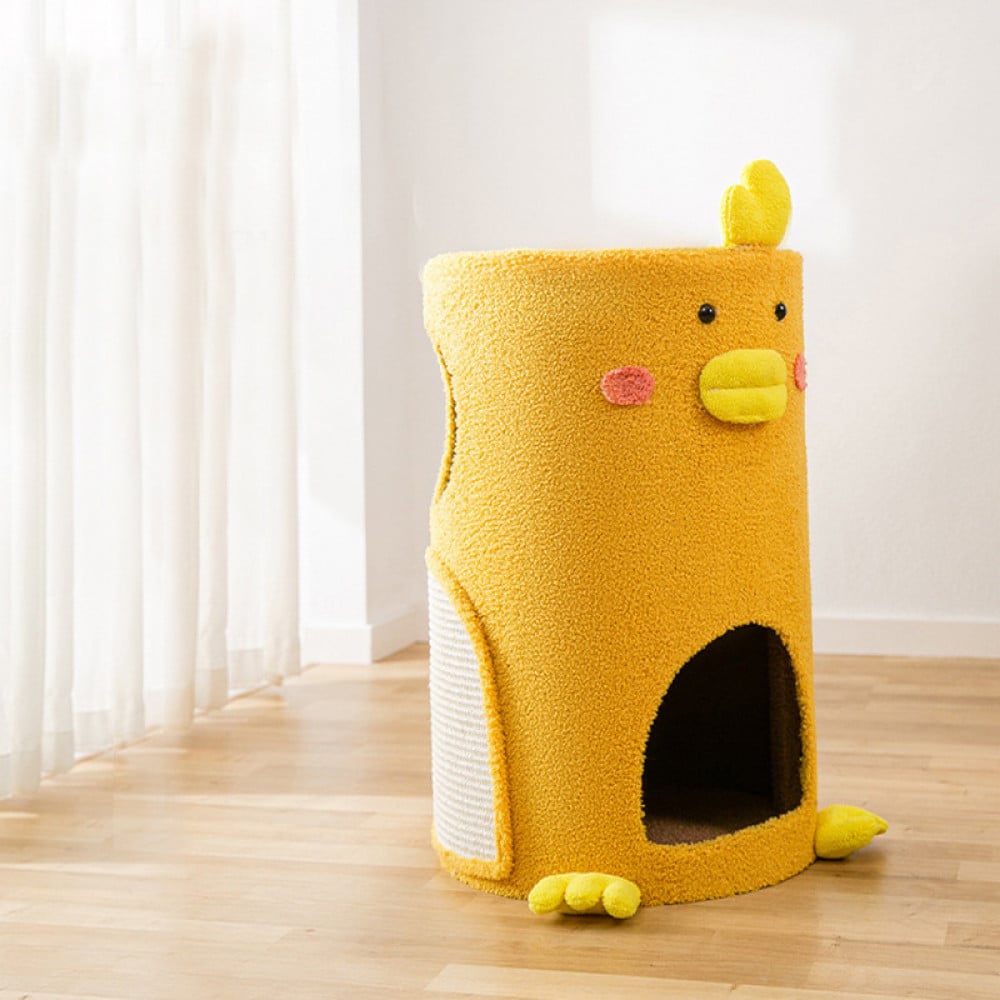
An integral part of cat social behavior revolves around sexual reproduction. Sexual development in cats begins at puberty, but the age at which puberty begins varies between genders and between different breeds. In the following lines, you will learn everything about domestic cat marriage so that you know what you are dealing with and how when making the decision to raise a cat at home. You can also buy all your cat's needs from Petaholic to provide optimal care for it at any stage.
How do domestic cats marry in the first place?
During research into the domestic cat mating process, we discovered that sexual and mating behaviors are important for males and females with regard to procreation. It is important to understand the form these behaviors take in adult cats, and to realize that they are not always eliminated by spaying. There is a specific timing for cat reproduction, which refers to a specific period in which a cat achieves maximum fertility. This is when a cat's chances of getting pregnant are at their highest.
Some signs of mating time include constantly meowing and rolling on the ground, scratching themselves against their owner's legs or other objects in the house, etc. These are basic indicators of the female's readiness to mate. She uses these signs to get the word out to her male suitors. This breeding time is referred to as the estrus or heat phase. Estrus first occurs in female cats older than 4 months. At this time, mating with a male cat is more likely to result in a successful pregnancy. Many breeders and pet owners try to time breeding in order to avoid it or have a successful pregnancy.
A female cat is not affected by a change in the environment around her if she is in heat, as she is interested in mating, unlike male cats who must be in a dominant position in their environment in order to mate. So they are brought to the male cat for mating. Once the kittens are together, the mating process does not last long, only about half a minute to 4 minutes in the following order:
- The male bites the female's neck to steady her and positions himself on top of her.
- He thrusts his pelvis into her and mates with her for only about 4 seconds.
- During this final stage or shortly thereafter the female will scream and attempt to break free by rolling or striking the male cat with her claws.
- The female cat will then have an after reaction, where she will roll over or lick and clean herself, and this after reaction lasts up to 9 minutes.
Among our distinctive products that we recommend at Petaholic to provide appropriate care and entertainment for your cat during the mating stage:
What do you need to know about mating cats before raising them at home and what are the stages of mating?
The domestic cat mating process is quite similar to other mammals, as mating occurs in three stages:
- Enrichment
- Pregnancy
- Birth
You must know all these stages so that you can take care of your cat at each stage. If the mother is pregnant, she needs adequate nutrition, and after giving birth as well. As a cat owner, it is your responsibility to take care of them at whatever stage they are going through.
1. The stage of estrus or heat
The heat cycle is the first step in the cat mating process. When a cat is in heat, she will be ready to mate, allowing the male cat to approach her. Heat cycles begin when the kitten is six months old. The heat cycle is repeated approximately every two weeks until mating occurs.
You will know that your cat is in heat and ready to mate when she becomes very affectionate. A female cat in heat also makes more noises than usual. A female in heat will usually raise her rump when patting her back as well, and will flick her tail afterwards.
Through these actions, female cats tell males that they are ready to begin mating. Once you confirm these signs and know that the cat is in heat, look for a male cat that matches her. Check the health of your male cat and see if he is the perfect age.
You must ensure that the female has reached her full adult size before you allow her to mate. This is important because the cat later puts all of her energy into feeding the kittens during pregnancy and after birth. So make sure your cat is at least two years old at the time of mating. If your cat is male, he must be at least 18 months old to breed.
2.Pheromones
Cats have a wonderful sense of smell, and pheromones act as a road map. Pheromones play a much more important role than just attracting males to females. A female cat's body releases certain chemicals when she is in heat.
Male cats get the signal that they are available for mating. If the cat becomes pregnant, it stops sending signals. This means that sterilized cats will never send the signals. It is also worth noting that pheromones are linked not only to mating, but also to behaviors such as respect and alarm between kittens, which strengthens the bond between kittens and their mothers as well.
Pheromones are different for male cats and female cats. It is possible to know the sex of the cat and its marking area through the pheromones present in the area. So male cats routinely spray to tell other male cats who is the boss in this place and marry the females within this place without any other male interfering.
3. Pregnancy and childbirth after domestic cats marry
After mating, the possibility of pregnancy occurring or not can be understood after a period of four weeks. The gestation period is approximately 65 days. Your female cat may be shy of you and prefer not to touch her. It's perfectly fine for your cat to be a little weird this time. You can help her by providing her a safe place in a secluded corner of your house. Also make sure it gets adequate nutrition and adequate amounts of water. The cat will give birth on the 60th day of pregnancy, but giving birth 10 days before or after during this period is normal.
When labor begins, labor may last from at least 20 minutes to several hours. You can also feed her between contractions. Your cat will lick her babies after birth, so help her clean the birth site well. Don't panic if you see your cat eating the placenta, as it is very nutritious. In addition, your cat prefers to rest for a few days after giving birth, so allow her to rest until she recovers enough to resume her activity and playfulness.
Among the distinctive products that we provide at Petaholic and we recommend that you use them if your cat is about to give birth and you do not want the place to turn into chaos:
Now, you know everything about cat mating from its beginning until its final stage, which is pregnancy and childbirth. This is so that you know how to take care of your cat properly. You can also buy all your cat supplies from Petaholic to take care of your cat at any stage.
How do you help your cat mate?
If by “mating” you mean referring to the process of mating or reproduction in cats, here are some tips that can help you make this process easier:
1.Healthy setting:
Make sure that your cat is in good health before starting the mating process. Examine the cat to ensure that there are no health problems, and consult a veterinarian if necessary.
2. Determine the mating time : Determine a suitable time for mating, which is within the dry period (the period when the cat is not menstruating).
3. Provide a quiet environment: Provide a quiet, distraction-free environment so that the cat feels comfortable and safe.
4.Monitoring and supervision: Monitor the mating process and be present to guide the cats if necessary. Avoid excessive intervention and be careful to avoid stress.
5. Emphasize communication: Encourage natural communication between cats and provide time for them to interact.
6. Proper nutrition: Providing healthy and balanced food for the cat, as nutrition plays an important role in the cat’s health and body strength.
7. Seeking the help of a veterinarian:
In the event of ineffective mating or any problem, it is preferable to consult a veterinarian who can provide assistance and guidance.
Please keep in mind that the process must be done carefully and in the context of cat health care, and it is preferable to seek the expertise of a veterinarian to ensure the safety of the animals and successful mating.
How many days do cats continue to ask for mating?
The menstrual cycle in cats is relatively short, lasting for about 4 to 10 days. During this period, signs of menstruation appear, such as abdominal pain, change in behavior, and the ability to accept mating. The male is interested in marriage during this period and may begin mating with females who want to marry.
However, it should be noted that the exact time of mating may vary between different cats, and sometimes there can be some discrepancies in the duration of menstruation and mating. If you plan to mate your cat or have any questions about feline reproductive behavior, it is best to consult a veterinarian who can provide advice and information specific to your cat's condition.
How do I know if cats have mated?
When mating occurs between cats, some signs and behaviors may appear that may indicate that mating has occurred. Here are some signs that could indicate a successful mating:
-Following /strong> After mating, you may notice that the male follows the female closely. This behavior can continue for a while after the process has finished.
-Changes in /strong> There can be changes in the cat’s behavior, such as calmness or hyperactivity.
-Vocal expression: The cat may make special sounds after mating, which express its satisfaction or interaction.
-Visual expression: A change in the cat’s facial expressions or facial features can appear, which is a positive sign.
Separation: Signs of separation between the cat and the male may appear after mating, as this is considered normal.
-Changes in appetite: Changes in the cat’s appetite may appear after mating, whether increased or decreased.
However, you should notice these signs carefully, and cats' mating experiences may vary. If you are unsure or have any concerns, it is best to consult your veterinarian.
Read also:-
- Why do cats cry when mating? Here is the answer in detail
- How to care for and feed a cat after giving birth



